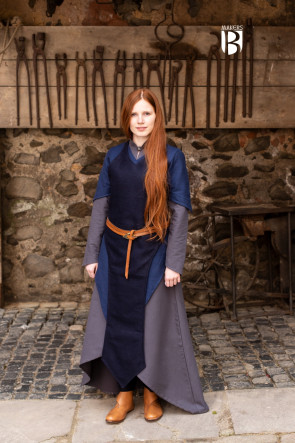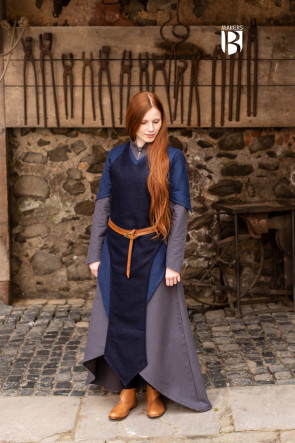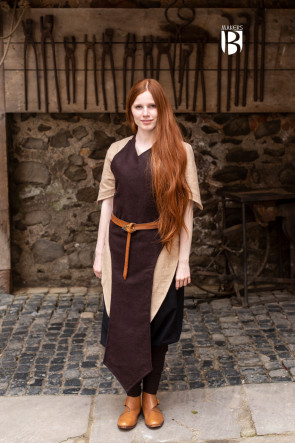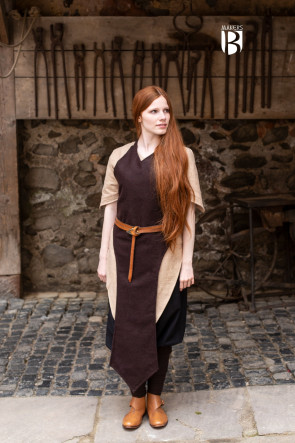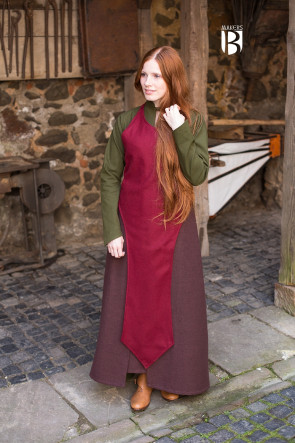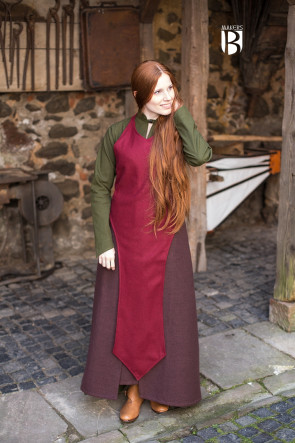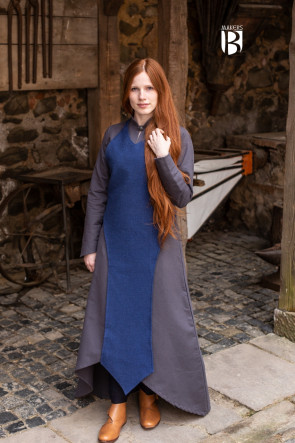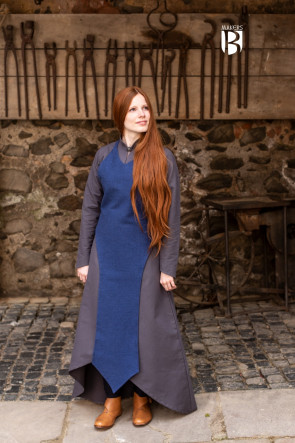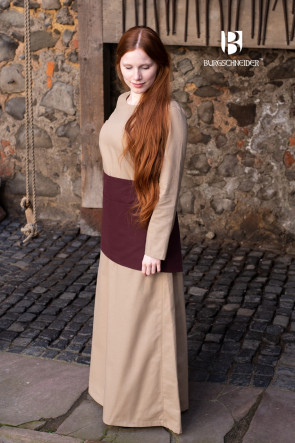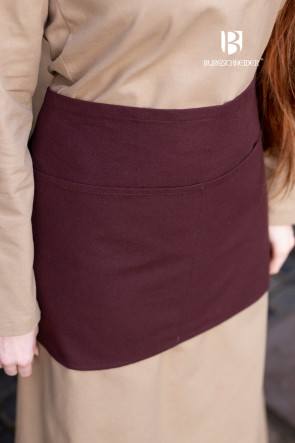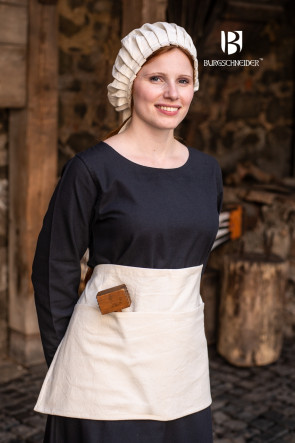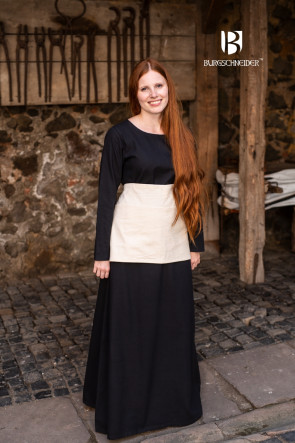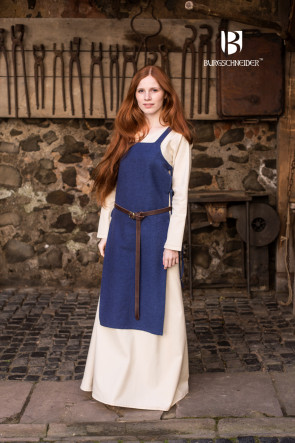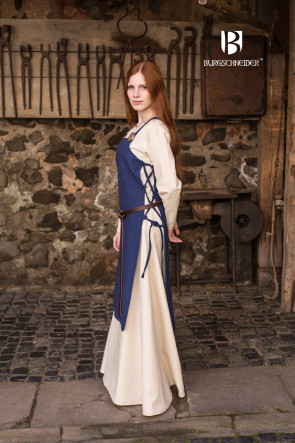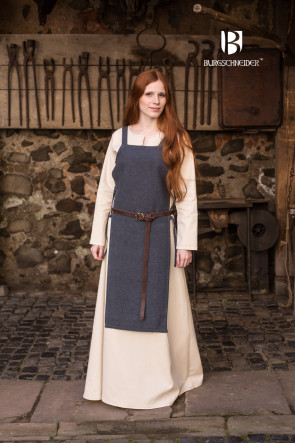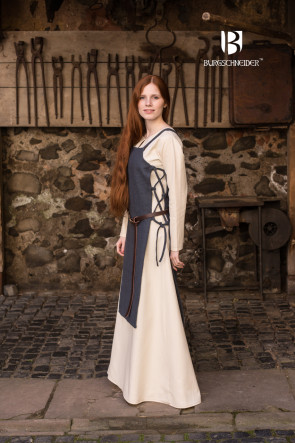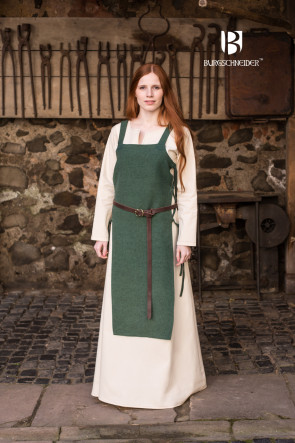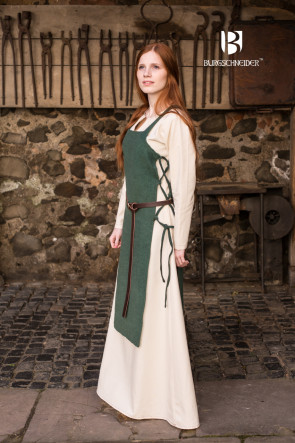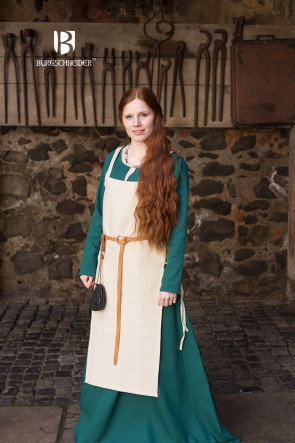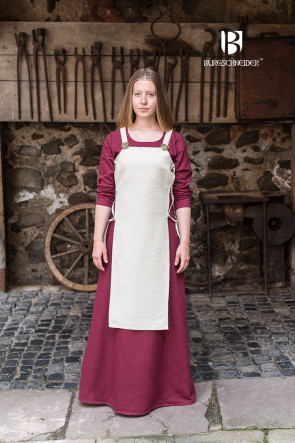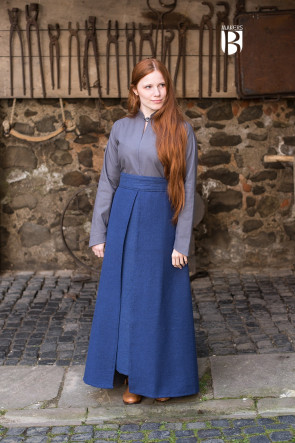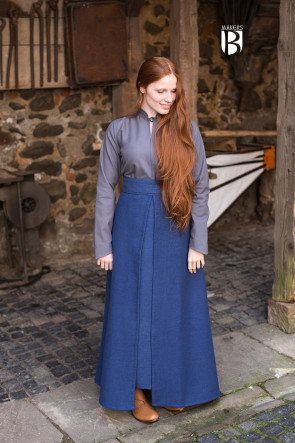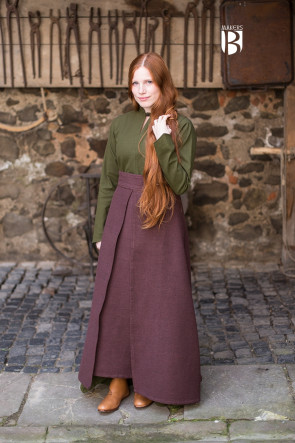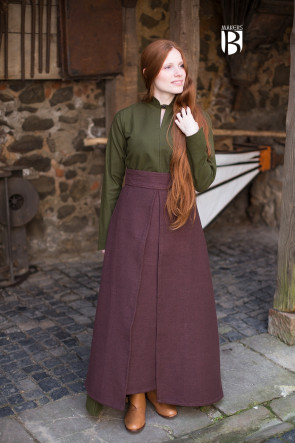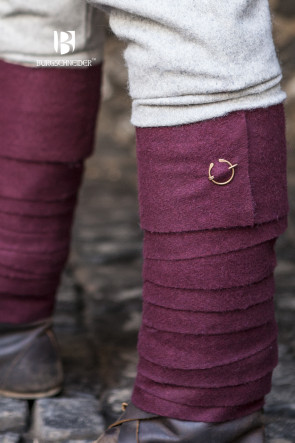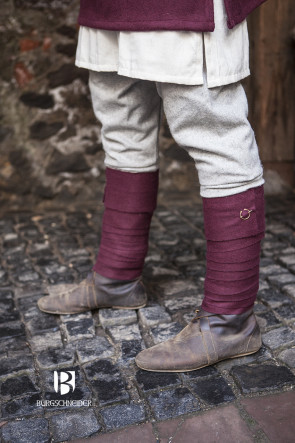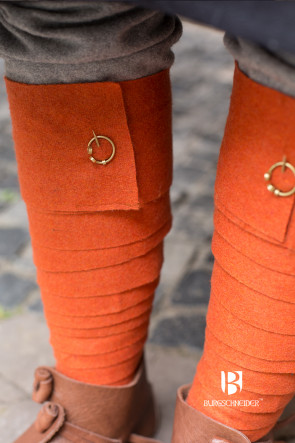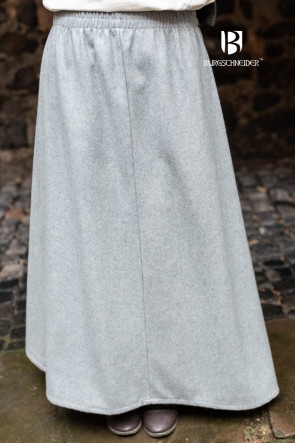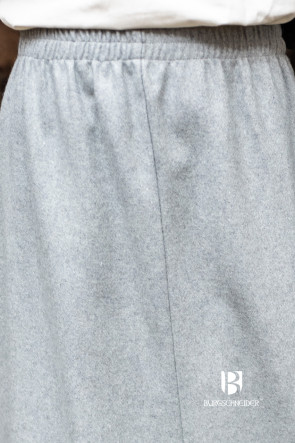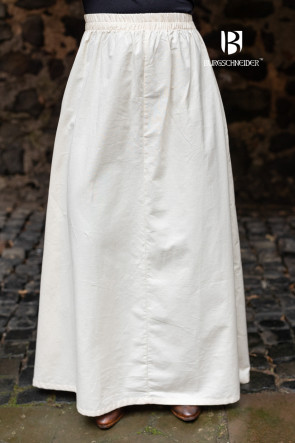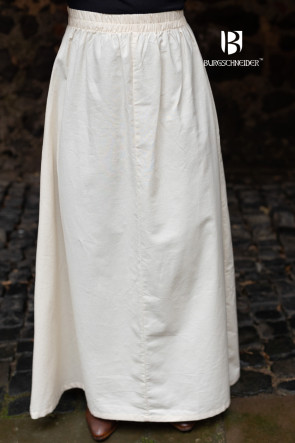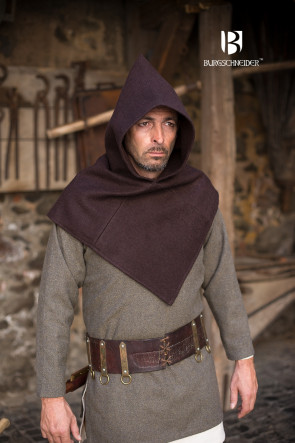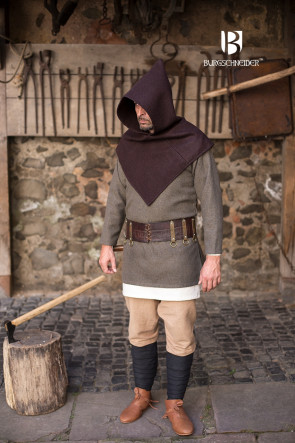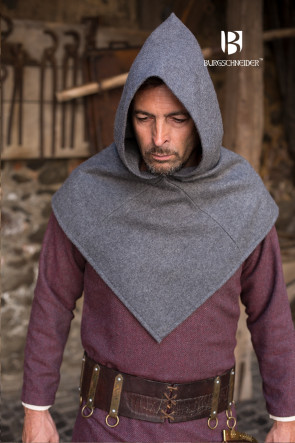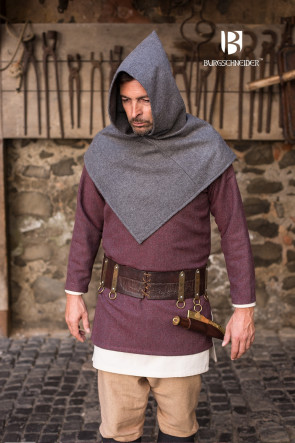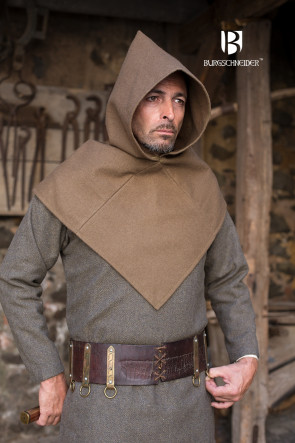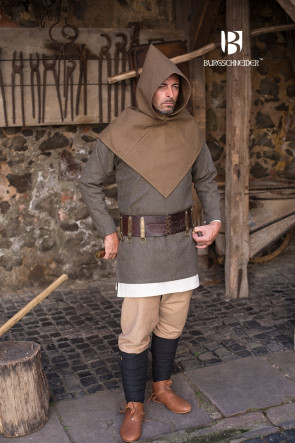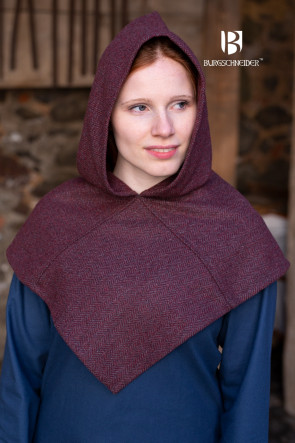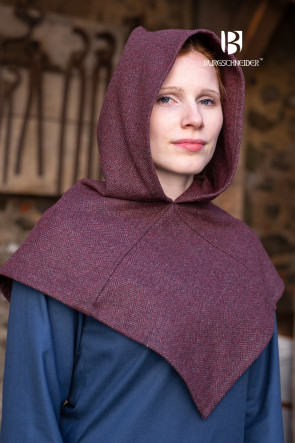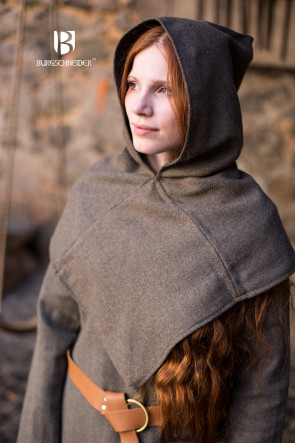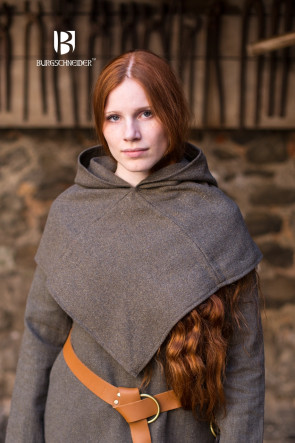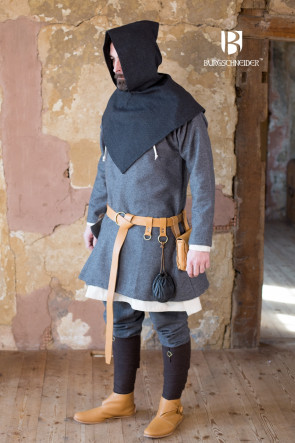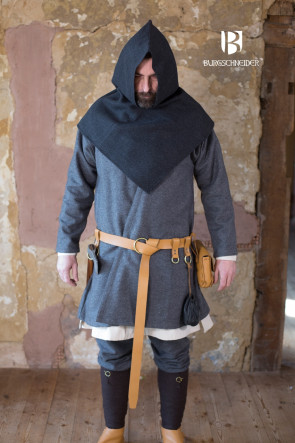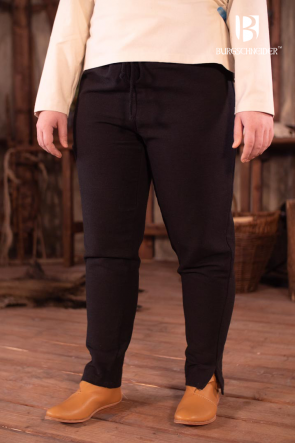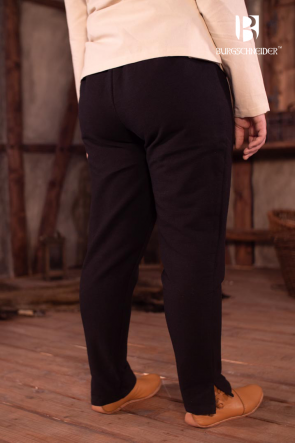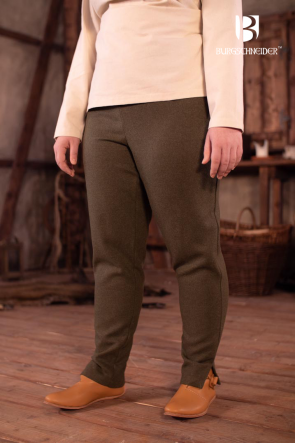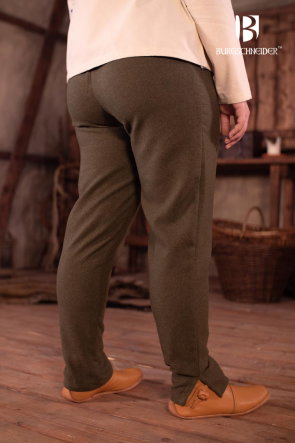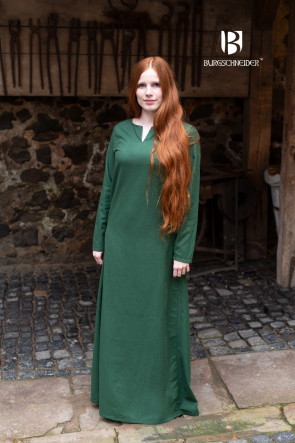Heroines

-
Schürze Asua - Wolle Blau
- Material: Wool Blend
- Genre: Fictional
- Sizes: S/M - XXL/XXXL
- Maker: Lena Krause
35,90 € -
Schürze Asua - Wolle Braun
- Material: Wool Blend
- Genre: Fictional
- Sizes: S/M - XXL/XXXL
- Maker: Lena Krause
35,90 € -
Schürze Asua - Wolle Rot
- Material: Wool Blend
- Genre: Fictional
- Sizes: S/M - XXL/XXXL
- Maker: Lena Krause
35,90 € -
Schürze Isa - Blau
- Material: York Cotton
- Genre: Fictional
- Sizes: S/M - XXL/XXXL
- Maker: Lena Krause
25,13 € -
17,90 €
-
17,90 €
-
Schürzenkleid Gyda - Blau
- Material: 100% Cotton
- Genre: Historic
- Sizes: S - XXL
- Reference: Hedeby Dress
29,33 € -
Schürzenkleid Gyda - Grau
- Material: 100% Cotton
- Genre: Historic
- Sizes: S - XXL
- Reference: Hedeby Dress
29,33 € -
Schürzenkleid Gyda - Grün
- Material: 100% Cotton
- Genre: Historic
- Sizes: S - XXL
- Reference: Hedeby Dress
29,33 € -
Schürzenkleid Gyda - Hanf
- Material: 100% Cotton
- Genre: Historic
- Sizes: S - XXL
- Reference: Hedeby Dress
29,33 € -
Schürzenrock Mera - Blau
- Material: 100% Cotton
- Genre: Fictional
- Sizes: S/M - L/XL - XXL/XXXL
- Maker: Lena Krause
45,90 € -
Schürzenrock Mera - Braun
- Material: 100% Cotton
- Genre: Fictional
- Sizes: S/M - L/XL - XXL/XXXL
- Maker: Lena Krause
45,90 € -
Set mit 2 kleinen Fibeln Uri
The brooch set Uri includes two handmade brass ring brooches with a diameter of about 2.4 cm, designed specifically for our winingas but can be used with any other clothing.
Mehr erfahren
Each brooch is unique, so small variations in shape and size are possible. Their simple elegance makes them suitable for any style.11,90 € -
Set mit 2 kleinen Fibeln Vafi
The brooch set Vafi consists of two handmade brass ring fibulas with a diameter of about 2.5 cm, designed specifically for our winingas but can be used everywhere else. The present omega brooch is a type of brooch in use since Roman antiquity, especially the offered variant with the balls as endings, and corresponds to the Ibero-Roman type, which was used from the Roman imperial period to the Middle Ages.
Mehr erfahren
Each brooch is unique, so small variations in shape and size are possible. Their simple elegance makes them suitable for any style.11,90 € -
Skirt Cyria - Wool Grey
This simple underskirt is made from a warm wool felt. Its waistband features a pleasant, soft elastic band for a perfect fit. This skirt is a pleasantly warm alternative to the underdress. When combined with a tunic or blouse, it allows for a variety of looks and styles to express your imagination.
Mehr erfahren49,90 € -
Skirt Kaja - Natural
This light skirt, made of fine cotton, is perfect under the summer sun. The waistband features a pleasant, soft elastic band for a perfect fit. When combined with a blouse, an alternative to an underdress is created.
Mehr erfahren27,90 € -
Skjoldehamn Gugel Bjorn Wolle - Braun
The Skjoldehamn Cowl was discovered in a pagan grave from the first half of the 11th century. This is one of the first examples of the headgear "Gugel" itself.
The hood has a basic square shape, characteristically the wide brim ends with a corner on the chest.
The grave find from Skjoldehamn raised many questions since its recovery in 1936 and still occupies today. According to current research, the dating of the pagan grave in the marshland is the first half of the 11th century. The hood of the gugel from Skjoldehamn has a simple square basic shape and a very wide brim, which does not fall round, but with a corner on the chest. This gugel is also a very early example of the type of headgear that became a ubiquitous garment in Europe during the Middle Ages.
In the course of research, attempts were made to assign the garment to a gender and cultural group. For this purpose, not only the DNA of the buried person was examined more closely, but also the additional finds. The enclosed trousers determined the theory of the researchers that the person must have been male. DNA examination in 1999 showed no Y chromosome present in the bones, which supported the theory that it had to be a woman instead. However, this methodology is considered outdated.
The question of culture points to Norway. This is assumed by ornamentation and morphological features, which suggest that the buried person was a Sami tribal member. Further research is needed, as some key evidence for these hypotheses is still lacking. More modern DNA analysis and research into the history of the fashions of the various Sami groups will shed light on this.
Mehr erfahren25,13 € -
Skjoldehamn Gugel Bjorn Wolle - Grau
The Skjoldehamn Cowl was discovered in a pagan grave from the first half of the 11th century. This is one of the first examples of the headgear "Gugel" itself.
The hood has a basic square shape, characteristically the wide brim ends with a corner on the chest.
The grave find from Skjoldehamn raised many questions since its recovery in 1936 and still occupies today. According to current research, the dating of the pagan grave in the marshland is the first half of the 11th century. The hood of the gugel from Skjoldehamn has a simple square basic shape and a very wide brim, which does not fall round, but with a corner on the chest. This gugel is also a very early example of the type of headgear that became a ubiquitous garment in Europe during the Middle Ages.
In the course of research, attempts were made to assign the garment to a gender and cultural group. For this purpose, not only the DNA of the buried person was examined more closely, but also the additional finds. The enclosed trousers determined the theory of the researchers that the person must have been male. DNA examination in 1999 showed no Y chromosome present in the bones, which supported the theory that it had to be a woman instead. However, this methodology is considered outdated.
The question of culture points to Norway. This is assumed by ornamentation and morphological features, which suggest that the buried person was a Sami tribal member. Further research is needed, as some key evidence for these hypotheses is still lacking. More modern DNA analysis and research into the history of the fashions of the various Sami groups will shed light on this.
Mehr erfahren25,13 € -
Skjoldehamn Gugel Bjorn Wolle - Herbstgrün
The Skjoldehamn Cowl was discovered in a pagan grave from the first half of the 11th century. This is one of the first examples of the headgear "Gugel" itself.
The hood has a basic square shape, characteristically the wide brim ends with a corner on the chest.
The grave find from Skjoldehamn raised many questions since its recovery in 1936 and still occupies today. According to current research, the dating of the pagan grave in the marshland is the first half of the 11th century. The hood of the gugel from Skjoldehamn has a simple square basic shape and a very wide brim, which does not fall round, but with a corner on the chest. This gugel is also a very early example of the type of headgear that became a ubiquitous garment in Europe during the Middle Ages.
In the course of research, attempts were made to assign the garment to a gender and cultural group. For this purpose, not only the DNA of the buried person was examined more closely, but also the additional finds. The enclosed trousers determined the theory of the researchers that the person must have been male. DNA examination in 1999 showed no Y chromosome present in the bones, which supported the theory that it had to be a woman instead. However, this methodology is considered outdated.
The question of culture points to Norway. This is assumed by ornamentation and morphological features, which suggest that the buried person was a Sami tribal member. Further research is needed, as some key evidence for these hypotheses is still lacking. More modern DNA analysis and research into the history of the fashions of the various Sami groups will shed light on this.
Mehr erfahren25,13 € -
Skjoldehamn Gugel Knud Fischgrät - Bordeaux/Grau
The Skjoldehamn Cowl was discovered in a pagan grave from the first half of the 11th century. This is one of the first examples of the headgear "Gugel" itself.
Mehr erfahren
The hood has a basic square shape, characteristically the wide brim ends with a corner on the chest.
The grave find from Skjoldehamn raised many questions since its recovery in 1936 and still occupies today. According to current research, the dating of the pagan grave in the marshland is the first half of the 11th century. The hood of the gugel from Skjoldehamn has a simple square basic shape and a very wide brim which does not fall round but with a corner on the chest. This gugel is also a very early example of the type of headgear that became a ubiquitous garment in Europe during the Middle Ages.
In the course of research, attempts were made to assign the garment to a gender and cultural group. For this purpose, not only the DNA of the buried person was examined more closely but also the additional finds. The enclosed trousers determined the theory of the researchers that the person must have been male. DNA examination in 1999 showed no Y chromosome present in the bones which supported the theory that it had to be a woman instead. However, this methodology is considered outdated.
The question of culture points to Norway. This is assumed by ornamentation and morphological features which suggest that the buried person was a Sami tribal member. Further research is needed, as some key evidence for these hypotheses is still lacking. More modern DNA analysis and research into the history of the fashions of the various Sami groups will shed light on this.34,90 € -
Skjoldehamn Gugel Knud Fischgrät - Oliv/Grau
The Skjoldehamn Cowl was discovered in a pagan grave from the first half of the 11th century. This is one of the first examples of the headgear "Gugel" itself.
Mehr erfahren
The hood has a basic square shape, characteristically the wide brim ends with a corner on the chest.
The grave find from Skjoldehamn raised many questions since its recovery in 1936 and still occupies today. According to current research, the dating of the pagan grave in the marshland is the first half of the 11th century. The hood of the gugel from Skjoldehamn has a simple square basic shape and a very wide brim which does not fall round but with a corner on the chest. This gugel is also a very early example of the type of headgear that became a ubiquitous garment in Europe during the Middle Ages.
In the course of research, attempts were made to assign the garment to a gender and cultural group. For this purpose, not only the DNA of the buried person was examined more closely but also the additional finds. The enclosed trousers determined the theory of the researchers that the person must have been male. DNA examination in 1999 showed no Y chromosome present in the bones which supported the theory that it had to be a woman instead. However, this methodology is considered outdated.
The question of culture points to Norway. This is assumed by ornamentation and morphological features which suggest that the buried person was a Sami tribal member. Further research is needed, as some key evidence for these hypotheses is still lacking. More modern DNA analysis and research into the history of the fashions of the various Sami groups will shed light on this.34,90 € -
Skjoldehamn Gugel Knud Fischgrät - Schwarz/Grau
The Skjoldehamn Cowl was discovered in a pagan grave from the first half of the 11th century. This is one of the first examples of the headgear "Gugel" itself.
Mehr erfahren
The hood has a basic square shape, characteristically the wide brim ends with a corner on the chest.
The grave find from Skjoldehamn raised many questions since its recovery in 1936 and still occupies today. According to current research, the dating of the pagan grave in the marshland is the first half of the 11th century. The hood of the gugel from Skjoldehamn has a simple square basic shape and a very wide brim which does not fall round but with a corner on the chest. This gugel is also a very early example of the type of headgear that became a ubiquitous garment in Europe during the Middle Ages.
In the course of research, attempts were made to assign the garment to a gender and cultural group. For this purpose, not only the DNA of the buried person was examined more closely but also the additional finds. The enclosed trousers determined the theory of the researchers that the person must have been male. DNA examination in 1999 showed no Y chromosome present in the bones which supported the theory that it had to be a woman instead. However, this methodology is considered outdated.
The question of culture points to Norway. This is assumed by ornamentation and morphological features which suggest that the buried person was a Sami tribal member. Further research is needed, as some key evidence for these hypotheses is still lacking. More modern DNA analysis and research into the history of the fashions of the various Sami groups will shed light on this.34,90 € -
Skjoldehamn Hose Andoya - Schwarz
Made from 100% cotton, these black trousers provide plenty of comfort and warmth. The Andoya Skjoldehamn Pants are a great choice for a wide range of medieval and fantasy characters. Slits along the cuffs allow them to fit over all kinds of boots and shoes. A drawstring and ribbon at the waistband allow the trousers to be fastened tightly without needing a belt. It’s the perfect choice for a low maintenance costume!
Mehr erfahren33,53 € -
Skjoldehamn Hose Sarina - Wolle Oliv
Made from wool blend fabric, these olive green trousers provide plenty of comfort and warmth. The Sarina Skjoldehamn Pants are a great choice for a wide range of medieval and fantasy characters. Slits along the cuffs allow them to fit over all kinds of boots and shoes. A drawstring and ribbon at the waistband allow the trousers to be fastened tightly without needing a belt. It’s the perfect choice for a low maintenance costume!
Mehr erfahren50,34 € -
49,90 €








